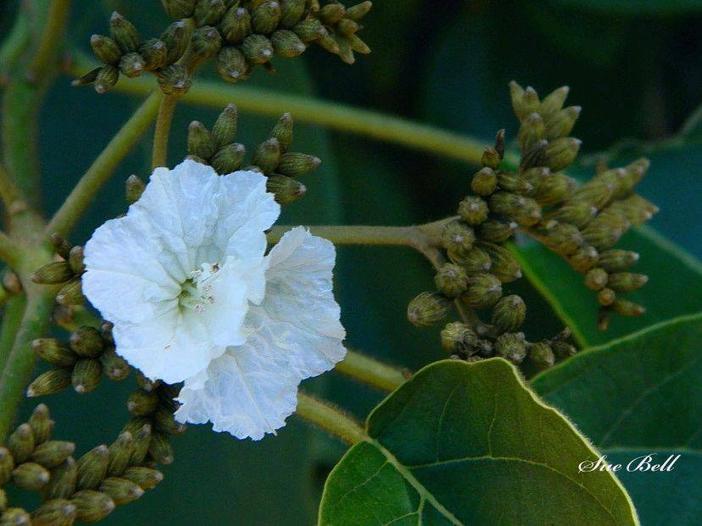Sudan Teak
(Cordia africana)
Sudan Teak (Cordia africana)
/
/

Sue Christian Bell
CC BY-SA 3.0
Image By:
Sue Christian Bell
Recorded By:
Copyright:
CC BY-SA 3.0
Copyright Notice:
Photo by: Sue Christian Bell | License Type: CC BY-SA 3.0 | License URL: https://creativecommons.org/licenses/by-sa/3.0 | Uploader: Sue Christian Bell | Publisher: Wikipedia Commons









Estimated Native Range
Summary
Cordia africana, commonly known as Sudan Teak, is an evergreen tree native to the highland forests, woodland savannas, and grasslands of Africa, particularly in Ethiopia, Angola, Uganda, and Kenya. It typically grows to a height of 40-50 feet (12-15 meters) with a rounded crown. The tree is characterized by its rough, grey bark and dense foliage of large, heart-shaped leaves. It produces clusters of fragrant, white flowers that are quite showy, attracting pollinators during the blooming season, which occurs in the warmer months. The fruits are spherical, yellowish, and edible, ripening to a soft texture and often used in local cuisines.
Sudan Teak is valued for its durable, termite-resistant wood, making it popular for high-quality furniture, flooring, and window frames. It is also planted for its ornamental flowers and as a shade tree in large gardens and parks. The tree is relatively low-maintenance, requiring well-drained soils and full sun to partial shade conditions. It is drought-tolerant once established, making it suitable for xeriscaping in suitable climates. However, it can be susceptible to root rot in poorly drained soils. In cultivation, it is important to consider its size and potential for dropping fruit when choosing a planting location.CC BY-SA 4.0
Sudan Teak is valued for its durable, termite-resistant wood, making it popular for high-quality furniture, flooring, and window frames. It is also planted for its ornamental flowers and as a shade tree in large gardens and parks. The tree is relatively low-maintenance, requiring well-drained soils and full sun to partial shade conditions. It is drought-tolerant once established, making it suitable for xeriscaping in suitable climates. However, it can be susceptible to root rot in poorly drained soils. In cultivation, it is important to consider its size and potential for dropping fruit when choosing a planting location.CC BY-SA 4.0
Plant Description
- Plant Type: Tree
- Height: 50-80 feet
- Width: 20-40 feet
- Growth Rate: Moderate
- Flower Color: White
- Flowering Season: Spring
- Leaf Retention: Evergreen
Growth Requirements
- Sun: Full Sun, Part Shade
- Water: Medium
- Drainage: Medium
Common Uses
Bee Garden, Bird Garden, Low Maintenance
Natural Habitat
Highland forests, woodland savannas, and grasslands of Africa
Other Names
Common Names: African Wild Olive, Mkoma, Large-Leaved Saucer-Berry, Sudan Teak, Anga, Dafe, Kitumba, Manilkara
Scientific Names: , Cordia africana, Calyptracordia abyssinica, Calyptraria africana, Calyptrocordia abyssinica, Cordia abyssinica, Cordia abyssinica, Cordia abyssinica var. acutifolia, Cordia amplifolia, Cordia domestica
GBIF Accepted Name: